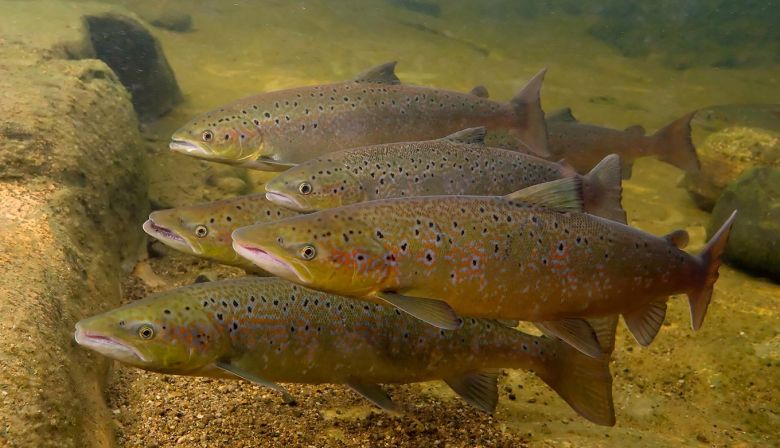Norway is to introduce new traps to protect wild salmon after experts warned they could become endangered as a result of contact with their farmed counterparts.
Farmed fish and non-native pink salmon carry various diseases and lice, and in recent years have spread from Russia across the Norwegian coastline, reaching Britain and mainland Europe.
The Norwegian climate and environment ministry has pledged 15m Norwegian kroner (£1.3m) for install river traps in the country’s northernmost region of Finnmark, as well as to enclosing all coastal fish farms by 2030.
The announcement coincides with the publication of a new report by the Scottish government that shows open-pen fish farms in the Highlands constitute a significant risk to the wild salmon population due to crossbreeding and an increase in parasites.
According to the North Atlantic Salmon Conservation Organization, the global population of Atlantic salmon fell by more than half since 1983 because of overfishing, habitat destruction by hydropower plants and the spread of salmon lice, among other factors.
It is estimated that only about 3 million wild salmon remain in the Atlantic, down from more than 8 million in the 1980s.
“The Norwegian populations of wild Atlantic salmon represent about one-third of all remaining populations of the species,” said Håvard Vedeler Nilsen, an adviser in Norway’s environment ministry. “The declining numbers of returning salmon is of great concern in Norway and has been for some time.”
While Norway strictly regulates the fishing of wild salmon, the species remains threatened by contact with farmed populations as the country is the biggest producer of farmed salmon in the world.
“Escaped farmed salmon can serve as a vector for diseases and parasites to wild salmonid populations and weaken the populations’ genetic integrity,” Vedeler Nilsen said. “Farmed salmon are bred with characteristics favourable in aquaculture such as fast growth and late maturation, however they lose other properties in the process. When an escaped salmon breeds with wild populations, the offspring might have a lower chance of survival due to its genotype.”
Additionally, the numerous fish farms contribute to the increase in salmon lice, parasites that feed on fish’s mucous layer and skin, making them more susceptible to disease. “Salmon lice are a natural parasite in Norwegian coastal waters, but with the large number of hosts available from aquaculture, the number of lice has grown exponentially,” Vedeler Nilsen said.
“We’ve got exactly the same problems in the west Highlands,” said Andrew Graham-Stewart, the director of Salmon and Trout Conservation, a charity campaigning for stricter fish farm regulation in the UK. He said a similar enclosure of Scottish farms was necessary for the preservation of wild salmon in Scottish waters. However, he said, regulation in the country had remained lax, with few steps taken to separate farmed fish from wild species.
“The future of wild salmon on the west Highlands and islands looks pretty grim, unless Scottish government starts to act to protect wild fish,” Graham-Stewart said. “The industry is not going to move into close containment because they’ve got little incentive to do so.”
While the Norwegian project focuses on the immediate need to separate salmon species, other long-term interventions are also planned, such as increasing the number of salmon gene banks that can be later used to re-establish populations.
“The plan has the potential to make a big difference for Atlantic salmon populations in Norway, and hopefully reverse the negative trend,” Vedeler Nilsen said.
